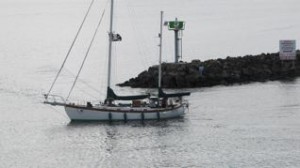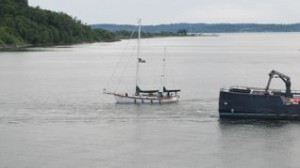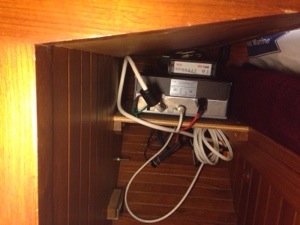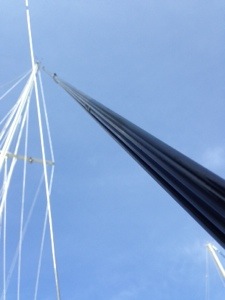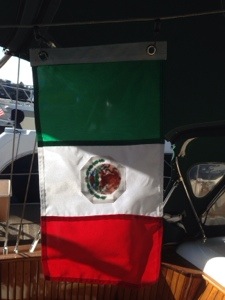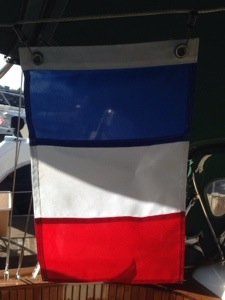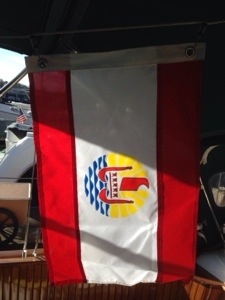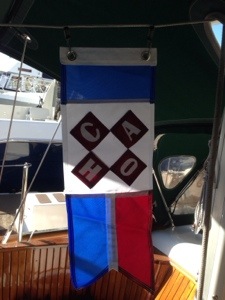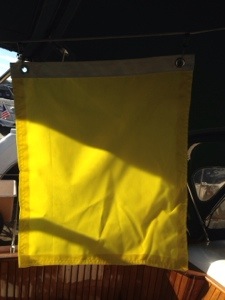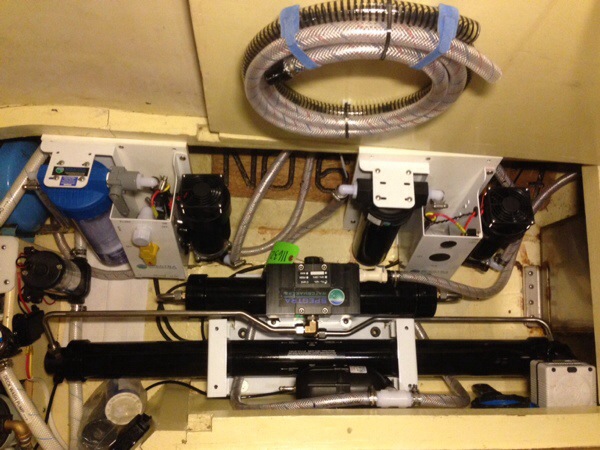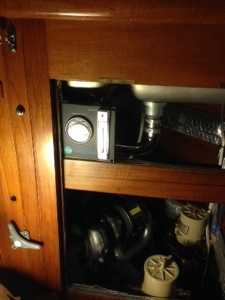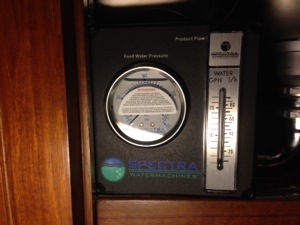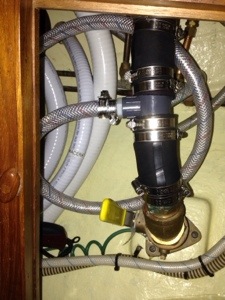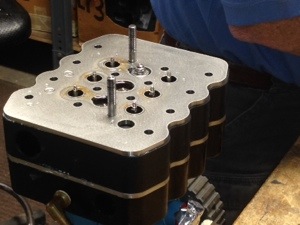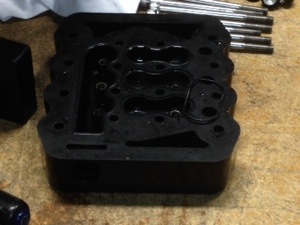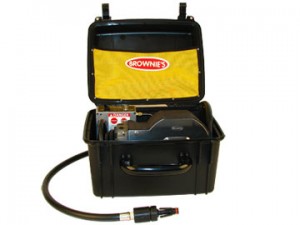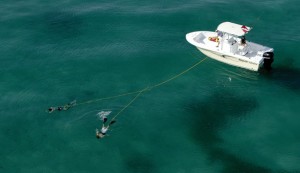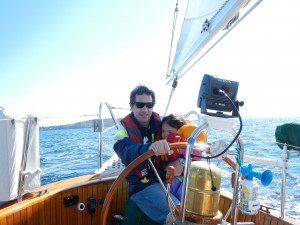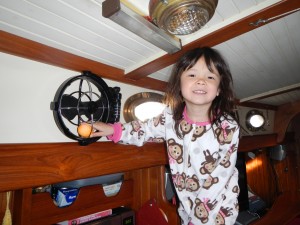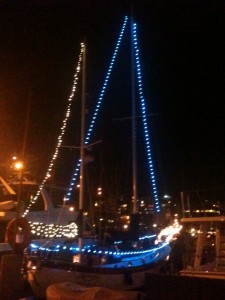June 1: Due to vacation time and a planned trip to Australia later this summer, we decided to take a short 5-day trip to the San Juan Islands. To maximize our time in the islands, we departed Lake Union late afternoon on Friday June 1. Two drawbridges and a set of locks later, we were out in Puget Sound with a favorable tide for going north. We were motor-sailing in light wind and about half way to Port Townsend began to smell something a bit off in the cabin (I thought it smelled like rotten eggs). It took another hour with the smell getting worse until Karen discovered the source, which she pinpointed to something under the aft-starboard berth. Our huge 8D starter battery was boiling hot and out-gassing hydrogen sulphide through the safety vents! After shutting down the engine and analyzing the situation, we decided to disable the alternator so we could still run the engine without charging the battery, then motored the remaining 2 hours to Port Townsend. We arrived after dark and anchored near the ferry terminal. The starter batter was still hot but was no longer out-gassing and the battery monitor showed it’s voltage was 12.8V. We decided to spend the next day in Port Townsend to fix the problem. On the positive side of things….there probably wasn’t a better place for boat repairs than Port Townsend with all of its marine shops and knowledgeable people working there.
June 2: Port Townsend–fixing the problem
We narrowed the starter battery problem to either the battery itself, the alternator, the smart regulator, or some connection in-between. Since the battery still worked (it was able to start the engine) and the high-output alternator and smart regulator were only 2 years old, it seemed like maybe a “system” problem. We decided to motor to the marina and get some advice from a marine technician. West Marine provided some names and phone numbers so we were able to find an electrical tech who could meet us at the marina. The problem was traced to an undersized wire between the high output alternator and the starter that had become highly resistive from getting so hot. This wire carries all the current that charges the battery and was sized for the original alternator which put out only 60Amps (the new Balmar alternator put out 110Amps). After paying the tech for his diagnosis, we were able to walk to West Marine to buy the new wire (only 1 foot) with lug connectors, and installed it in less than an hour. It was early afternoon, so we decided to stay in Port Townsend the rest of the day and leave early on Sunday for the crossing of the Strait of Juan de Fuca. Since the cabin still smelled like rotten eggs from the battery hydrogen sulphide, we walked to a grocery store to buy some baking soda and gave the battery compartment and entire berth a washdown.
June 3: Onwards to Jones Island
An early morning departure with a maximum ebb tide gave us terrific speed out of Admiralty Inlet. We motored for a few hours while keeping an eye on the starter battery to make sure it wasn’t getting hot again. Everything was working fine, and as the wind picked up, we sailed from the middle of the strait all the way to Jones Island. We reached Cattle Pass right near max flood with a 10knot wind behind us. With all sails out, we were cruising at 10knots (SOG) and reached Jones Island by mid-afternoon. We anchored in 50′ of water and rowed the dinghy to shore for a fun hike around the island and Jacintha braved the cold water along the shore. We returned to the boat and strung the hammock between the masts, relaxed, BBQ’d, etc.
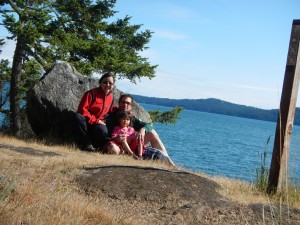

June 4: Sailing and Roche Harbor
Woke up to cloudy skies and light winds, and enjoyed a lazy morning. The Cap’n turned cook made bacon and eggs while Jacintha decorated the boat cabin with pictures and drawings. Since Roche Harbor was only a few miles away, we decided to sail along the west coast of Stuart Island to see if we could spot any whales. Although we didn’t see any whales this time, we made it up to the lighthouse before turning around and heading to Roche Harbor. We anchored out in the bay, then took the dinghy to shore. While Karen was enjoying a hot shower at the marina, Jacintha and the Cap’n went into the general store for a few supplies. Somewhere between the food aisle and the fishing aisle, Jacintha spotted a water gun…..
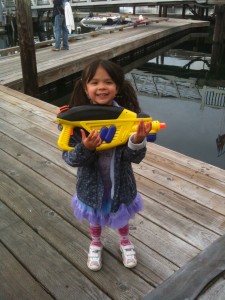
We had no problem getting outside deck seating at the Madrona Grill this early in the season. Had our usual Firecracker Bloody Mary and French Dip while sitting under the overhead heaters to keep warm. After dinner we took a stroll to the white chapel overlooking the harbor where we got married 4 years ago.
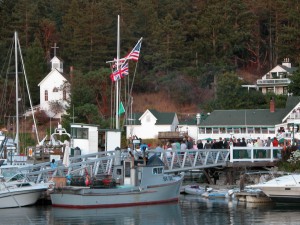
June 5: Rough passage across the strait
The marine forecast called for gale force winds in Juan de Fuca strait. We up-anchored early and motored away from the protected harbor. Hoisted the jib, main, and mizzen sails in Haro Strait with an ebb tide carrying us south and 15 knot wind. The conditions changed in the strait with a 20-30knot westerly going against the ebbing tide. This spells LARGE chop and uncomfortable conditions down below for Jacintha and Karen. Angle of heel was 20 deg and lots of weather helm with occasional waves breaking on deck and occasional gusts putting the side-rail in the sea. After 3 hours of this, Cap’n bought in the jib and sailed under main and mizzen to decrease the heeling and allow and more comfortable run downwind. With increasing winds and gusts, we had to pay close attention at the helm to not allow the boat to turn broadside into the wind. The wind waves were building and we surfed in an eastward direction towards Admiralty Inlet. We reached the inlet at max flood with a calmer 15 knot tailwind with a boatspeed of 12.2 knots (SOG), the fastest we’d ever seen Apropos go! Sailed another 3 hours southward in Puget Sound and reached Kingston near dark. Anchored near the ferry terminal and had a great sleep.
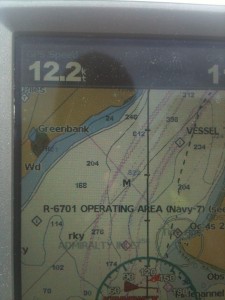
June 6: Back home
Had a relaxing morning and up-anchored around 1pm for the 15 mile sail back to Seattle. Combined sailing and motoring in light winds, sunny skies, and smooth water. The locks were busy and since the train trestle was also down, we decided to go into Shilshole marina and get together with a friend who lives in the condos on the south end of the marina. Kit joined us aboard Apropos for some food and drinks, then we motored back to the locks as she took some photos from her balcony. We were able to get right in the small locks and motored the remaining 2 miles to Lake Union.
